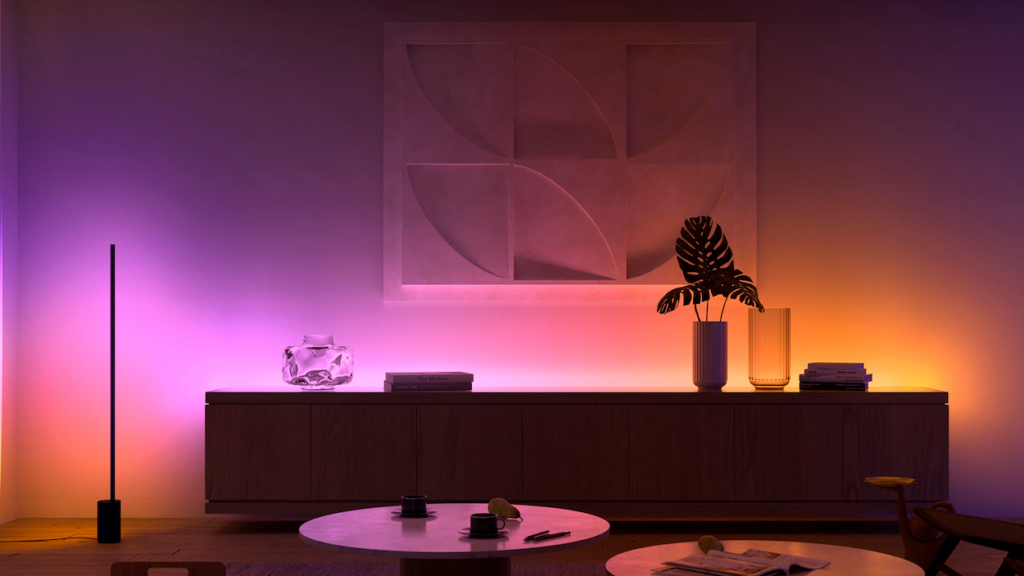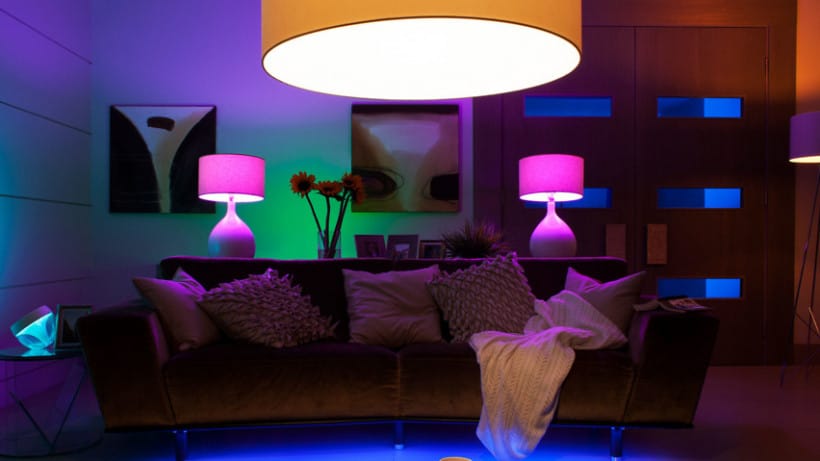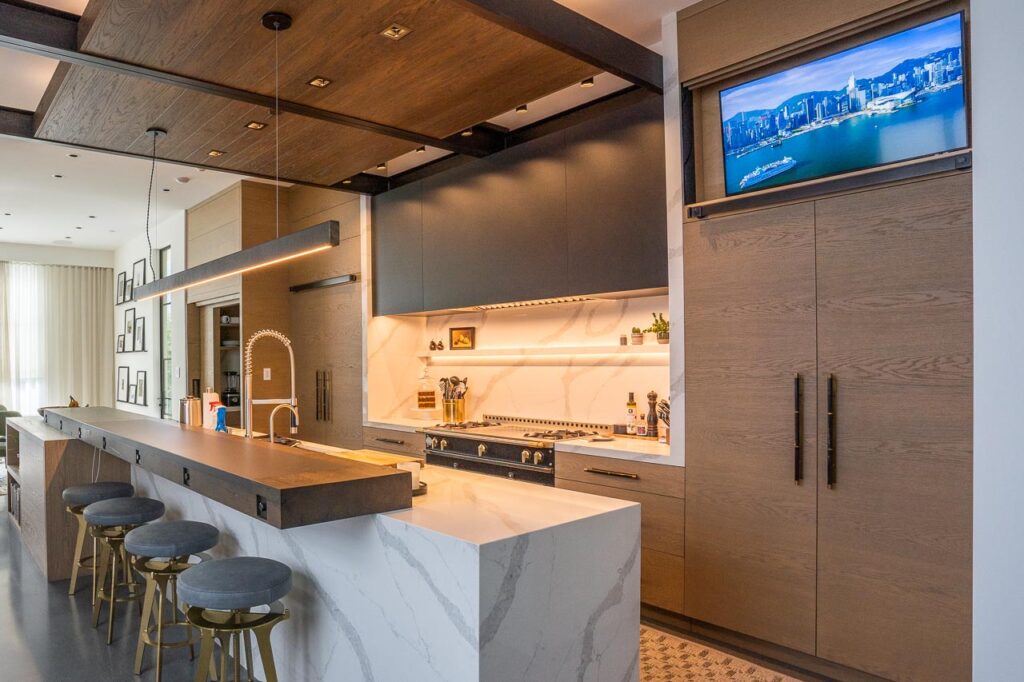
Embedded Fixture Control
Systems like Philips Hue are fixture-based. This means that the smart functionality only works in areas where you install Philips Hue fixtures or bulbs. They sell about 300 different fixtures for the inside and outside of the home. However, if you don’t like the fixtures for some parts of your home, the Philips system can’t bring smart room functionality to those rooms.
Philips Hue controls the experience by manufacturing the fixtures and the “hub” that all the lights connect to. They communicate on a proprietary bus to prevent interference and strain on your WiFi system.
Benefits of Philips Hue
The benefit of this system is that many of its accessories are easy to install. Most homeowners can replace a standard light bulb with a Philips Hue lightbulb. Meanwhile, the purchasable fixtures simplify the installation for an electrician or DIY-friendly homeowner.
Downsides of Philips Hue

Despite their convenience, smart lighting systems like Philips Hue also have several downsides. For one, they can’t control any lighting built into your home’s infrastructure, such as recessed lighting. This means that even if you retrofit every other fixture and bulb in your home with Philips Hue products, you’ll still be unable to control the built-in lighting fixtures. Additionally, there will be many instances where one of Philips’ 300 fixtures doesn’t align with the homeowner’s quality, aesthetic and ambiance desires.
Inflexibility In Fixtures: Inflexible System Can Leave Aesthetic Needs Unserved
Unfortunately, the lack of fixture choices and the inability to integrate built-in lighting may leave homeowners feeling as if their lighting system is heavily constrained. This forces homeowners to prioritize between achieving comprehensive home lighting control and maintaining their preferred aesthetic and ambiance. While they are great for a simple retrofit of an accent light here and there, their lack of versatility ultimately hinders them from being a fully-baked home lighting control system.
Our Thoughts: Philips Hue vs Lutron Lighting Control

While limited, Philips Hue is an approachable system for those who want more than traditional light switches. It is a lot like Apple’s walled garden approach: If you buy all Philips Hue fixtures, smart bulbs and controllers, everything “just works.” The user can reprogram the system at any moment and is easily customizable.
However, Philips Hue falls short of more thorough solutions such as Lutron when it comes to lighting design. Philips Hue’s inability to work with any fixture means the system will never be home-wide if you have LED recessed lighting. Additionally, we suspect many would prefer more flexibility in their lighting fixture options over what Philips Hue offers. You can check out all the differences in SoundVision’s article.
Additionally, Lutron’s lighting control is a more capable system with broad fixture compatibility, robust reliability and customizable dimmers/keypads. The overall experience is a more mature system for smart lighting control. If you’d like a lighting design consultation, call us at 415-883-7700. Additionally, we can help you install smart lighting control systems like Lutron thanks to our well-established parent company, SoundVision. They install dozens of lighting control systems every year.




